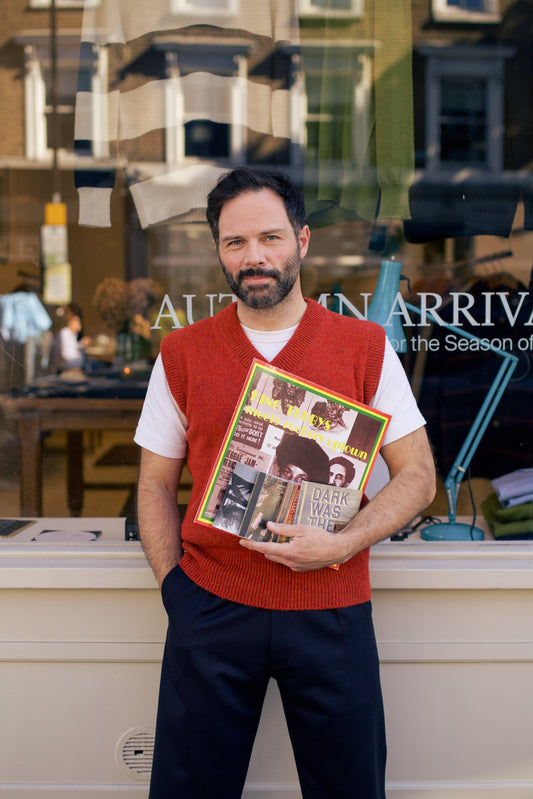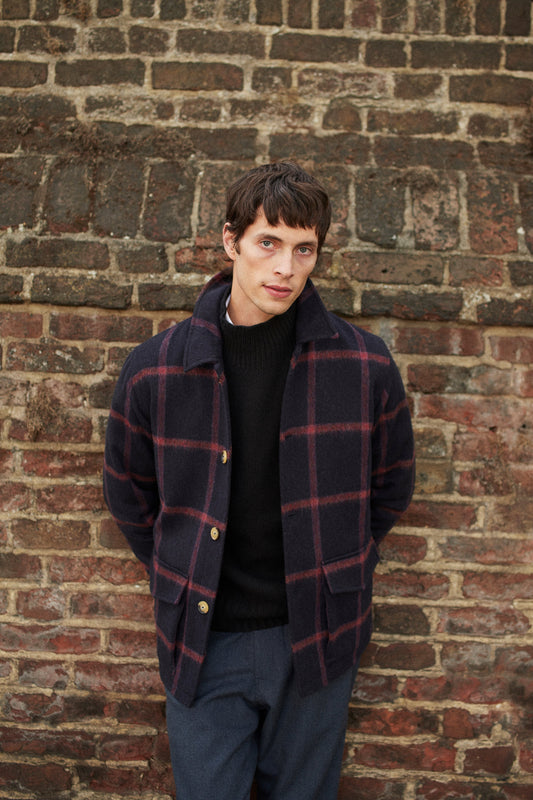Over the past year, I’ve been seeking out the comforting audio-visual cocoon of some of my favourite old TV shows. Mad Men has been a particular highlight, not just for the story itself, but also for the masterful costuming - a look that, arguably singlehandedly, kick-started a resurgence of interest in vintage Sixties style for guys of my age back in the late noughties and early teens. Of course, the pre-hippy Sixties was a time of rigid gender stereotypes and social conformity, very much underpinned by the clothes that defined the era. I mean this quite literally - look at the signature silhouettes of the era for men and women. If you were a man, it was all about broad-shouldered suits and high-waisted trousers to emphasise that sort of stereotypically masculine V-shaped torso that you’d see on an old-timey circus strongman. If you were a woman, it was a dress that clung to your figure, slipped over a corset that restricted your movement and emphasised your hips and chest. Even before you opened your mouth, you’d be wearing clothes that not only dictated how people saw you, but also affected how you physically and mentally moved through the world. Thank God that, seventy years later, things are beginning to change and gender-free clothing is becoming more accepted and prolific than ever.
The move towards more gender-neutral clothing has been a pretty slow one, mostly because gender is a bizarrely invasive beast in all our brains. In essence, most items we have hanging in our wardrobes should be gender-neutral, but through cut, colour or ornamentation have somehow gained a performative show of masculinity or femininity at some point during the manufacturing process. We still live in an overtly gendered world - something that, like your own breathing or hearing a train chug by in the distance, weirdly only becomes more noticeable when someone makes you aware of it. A fun experiment is to walk into any place that sells toiletries or cosmetics and have a look at how many unnecessarily and/or aggressively gendered products there are out there (seriously, there’s a make-up line for men called War Paint). So it’s no wonder that up until relatively recently, the way most of us would process the idea of dressing in an “androgynous” way would be through people flipping the idea of what is expected of their gender to wear: men dressing in traditionally feminine clothes (see: David Bowie, Harry Styles) and women dressing in traditionally masculine clothes (see: Katharine Hepburn, Annie Lennox). However, while this is a very important part of the conversation, it’s not the whole conversation. Genderneutral clothing isn’t about men wearing heels and women wearing trousers, it’s about clothing that fits everybody. I mean that quite literally: every body, no matter your personal style or how you might gender-identify. Back in the day at university, I worked in a shirt shop that had lines for both men and women. The vast majority of the women’s collection was very tailored to the body, by either employing darting or stretch fabrics. It was gendered in a stereotypically “feminine” way that made it less inclusive. Meanwhile, the company offered a “looser” fit for women - a style that was rarely out on display and had to be brought out of a solitary drawer when the customer requested it, like some sort of contraband. It came in only two, plain colours - and still had darting on the bust. As I say, gender is a bizarrely invasive beast. What’s great about the place we’re at with fashion now is that it’s all about making the clothes we wear more inclusive and getting us all to think more broadly about what constitutes gender-neutral clothing. That doesn’t mean highly gendered clothing is going anywhere - in fact, the conversation should be able to empower more people of both genders to wear these highly gendered pieces should they wish. However, hopefully what it means in addition to this is an expansion in the kind of clothes we can all wear that are less gendered in their construction.
Workwear is a prime example. Historically, workwear was constructed for practicality, ease of movement and robustness: function leading form, unlike most items of clothing where the form has lead, and more often than not actively restricted, the wearer’s function (generally seen in traditionally female garments like pencil skirts, corsets, stilettos, and women’s trousers which tend to lack the practical pockets their male-focused counterparts do). The kind of items we tend to think about when it comes to workwear like chore jackets, cargo trousers and linen shirts are cut in an inherently un-gendered and far more inclusive way than most other clothing you’ll find on the market - and the fact that they are seen as “male” clothing only really comes from the jobs they were created for being primarily performed by men way back when, generally manual labour such as fishing or logging (side note: did you know the reason that you see a lot of granddad-collars in workwear is a throwback to the shirts that mill workers wore in England, where collars were removed to decrease the likelihood of them being caught in machinery?). Today, these jobs are rarely being performed by those who enjoy wearing workwear, so it goes without saying that the gendered association of these pieces should be put to rest too. As we move forward, what’s great to see is more workwear brands who wish to offer their customers more choice not “recreating” these items for different genders as might have been the case only a few years ago, but thinking instead that no gender is required, only a wider range of sizes. By extending their size range either upwards or downwards or (even better) in both directions, these brands are both making their pieces appropriate for more body types of all genders without dictating what a person of any gender should be gravitating towards. And that feels like a more inclusive future we should all find comfort in. NC





